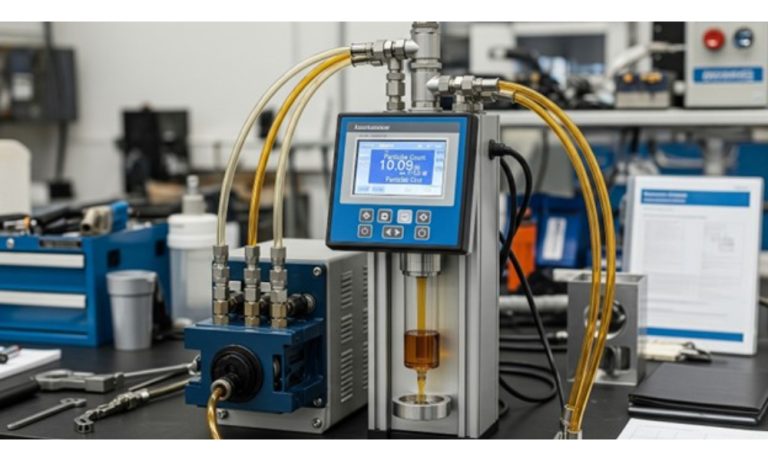Automatic watches are more than just timekeeping tools — they are intricate mechanical creations that combine craftsmanship, tradition, and precision. Unlike quartz watches, automatics rely on a complex interplay of gears, rotors, and springs that require consistent care and thoughtful handling. That’s why accessories like an automatic watch winder play such a crucial role in maintaining optimal performance, especially when a watch isn’t worn daily.
Even seasoned collectors can make simple mistakes that compromise a watch’s accuracy, longevity, or overall condition. From improper storage and skipped maintenance to mishandling the crown, these oversights can lead to premature wear or mechanical failure.
In this article, we’ll explore the most common mistakes automatic watch owners make and provide practical advice on how to avoid them. Whether you’re just starting your collection or have been wearing automatics for years, understanding these pitfalls will help you keep your timepiece running smoothly for generations to come.
As part of that care, many collectors rely on solutions from trusted names like Barrington Watch Winders, whose products are designed to keep automatic watches safe, wound, and ready to wear — all while showcasing them with elegance.
Not Keeping the Watch in Motion
One of the most fundamental mistakes automatic watch owners make is assuming that their timepiece can sit idle for extended periods without consequence. Unlike quartz watches, which rely on a battery, automatic watches are powered by the movement of the wearer’s wrist. When not worn regularly, the watch’s mainspring winds down, and the movement comes to a stop.
While it’s normal for an automatic watch to stop after a day or two of inactivity, allowing it to remain motionless for long stretches can lead to deeper issues. When the movement isn’t running, lubricants inside the mechanism may begin to settle or dry unevenly. Over time, this can cause increased friction, reduced accuracy, and even damage to delicate components.
To avoid this, it’s important to keep your watch in gentle motion when it’s not being worn. Wearing it regularly is one option, but for collectors who rotate multiple timepieces or don’t wear the same watch daily, using a watch winder is a smart solution. A quality winder simulates natural wrist movement, helping maintain power reserve, complication settings, and even internal lubrication — all without overwinding.
By keeping your watch active, even while off the wrist, you support its long-term mechanical health and ensure it’s always ready to wear when you are.
Storing Watches Improperly
Another common mistake among automatic watch owners is improper storage. Tossing your watch into a drawer, placing it face-down on a hard surface, or stacking multiple watches together without protection might seem harmless — but these habits can lead to serious and often irreversible damage.
When watches are stored without separation, their cases, crystals, and bracelets can rub against one another, causing scratches, dents, and other cosmetic damage. Dust and debris can also accumulate in exposed areas like the crown, bezel, or bracelet links, potentially interfering with the watch’s function over time. Additionally, storing a watch near electronics or speakers may expose it to magnetic fields, which can disrupt the movement’s precision.
To prevent these issues, it’s best to use dedicated storage solutions designed for watches. Individual compartments in a watch box, soft travel rolls, or padded pouches help avoid contact damage and reduce dust exposure. Anti-magnetic lining or distance from electronic devices can further protect your watch’s accuracy. And for those who want to combine storage with functionality, a watch winder can offer both safe housing and mechanical upkeep in one.
Proper storage isn’t just about organization — it’s a key aspect of preserving the condition, performance, and value of your automatic watch.
Ignoring Moisture and Temperature Exposure
Storing an automatic watch in the wrong environment is a mistake that can quietly but significantly damage its internal components. Common examples include leaving a watch in a steamy bathroom, placing it on a sunny windowsill, or storing it near a heating or cooling vent. While these locations may seem convenient, they expose the watch to two of its biggest enemies: moisture and temperature fluctuation.
High humidity can lead to condensation inside the case, even in water-resistant models. Over time, this moisture may cause rust to form on delicate parts of the movement or degrade the gaskets that protect the watch’s internals. On the other hand, extreme or fluctuating temperatures can cause the oils within the movement to either thicken or break down, which negatively impacts accuracy and increases internal wear.
To protect your timepiece, store it in a dry, climate-stable environment away from direct sunlight, radiators, or damp areas. Ideally, the storage area should maintain a consistent room temperature with moderate humidity — neither too dry nor too humid. If you live in a climate with extremes, consider using silica gel packs or humidity-controlled storage cases to create a protective microclimate around your watches.
By being mindful of where and how you store your automatic watch, you can avoid the gradual but costly effects of environmental exposure.
Changing the Date at the Wrong Time
Setting the date on your automatic watch may seem like a simple task — but doing it at the wrong time can cause serious damage to the movement. This is one of the most overlooked mistakes among new and even experienced watch owners.
Most automatic watches begin the date-change process internally a few hours before midnight, typically between 9:00 PM and 3:00 AM. During this period, gears responsible for advancing the date are engaged. If you manually adjust the date while those gears are in motion, you risk forcing them out of alignment, damaging the teeth, or even breaking delicate components inside the mechanism.
This kind of damage is not always immediately obvious, but over time it can lead to improper date changes or require costly repairs by a specialist.
To avoid this issue, always follow these best practices:
- Do not use the quickset date function between 9:00 PM and 3:00 AM.
- If you’re unsure of the watch’s internal time (for example, after it has stopped), advance the hands to a time outside that range — like 6:00 AM or 6:00 PM — before setting the date.
- Consult your watch’s manual, as some brands have slightly different safe time windows.
Being mindful of the date-setting window takes only a few seconds but can save you from long-term mechanical problems. A little patience goes a long way when dealing with the precision internals of an automatic movement.
Wearing the Watch Too Loose or Too Tight
Wearing your automatic watch with an improper fit is more than just a comfort issue — it can also lead to unnecessary wear and even mechanical problems over time. A watch that’s too loose or too tight on the wrist presents risks that many owners underestimate.
A bracelet or strap worn too loosely allows the watch to shift and rattle around the wrist, especially during daily movement. This constant jostling can cause premature wear to the bracelet links, stretch the spring bars, and increase the chances of the watch accidentally hitting hard surfaces. In some cases, it may even lead to the watch slipping off entirely.
On the other hand, a strap that’s too tight can restrict blood flow, cause discomfort, and put pressure on the watch case and crystal. It can also accelerate wear on leather straps and create stress on the lugs and pins holding the watch in place.
To achieve the ideal fit:
- The watch should sit securely on your wrist but still have a slight amount of movement — about a finger’s width of space between the band and your skin.
- It shouldn’t slide freely up and down your arm, nor should it leave deep marks after removal.
- For metal bracelets, have links added or removed by a professional to ensure an even, balanced fit.
- For leather or rubber straps, use the adjustment holes to fine-tune the tightness without overstressing the material.
An optimal fit not only enhances comfort and aesthetics but also helps preserve the structural integrity of your watch and its strap over the long term.
Neglecting Regular Cleaning
Failing to clean your automatic watch regularly is a small oversight that can lead to long-term damage. After daily wear, your watch collects sweat, skin oils, dust, and environmental particles — especially around the case back, lugs, bezel, and bracelet links. Left unchecked, this buildup acts like an abrasive, accelerating wear and dulling the finish.
Dirt and grime trapped between bracelet links can also lead to stretching or loosening over time, while moisture and salts from the skin can corrode metal surfaces and degrade gaskets — even on stainless steel models.
To maintain both the appearance and mechanical health of your watch, follow these simple cleaning tips:
- Wipe down your watch with a soft, dry microfiber cloth after each wear to remove sweat and dust.
- Use a soft-bristled brush (like a clean toothbrush) to gently clean around the crown, bezel, and bracelet joints once every few weeks.
- Avoid submerging your watch in water unless it is specifically rated for it — and even then, be cautious with soaps or chemicals.
- For leather straps, avoid moisture altogether and consider using a leather conditioner occasionally to prevent cracking.
Regular light cleaning takes just a minute but goes a long way in preserving your watch’s condition and extending the life of its materials and moving parts. Treat it like the precision instrument it is — not just an accessory.
Skipping Routine Servicing
An automatic watch is a finely tuned mechanical instrument — and like any precision machine, it needs regular servicing to function properly over time. One of the most common and costly mistakes watch owners make is assuming that if a watch is still running, it doesn’t need maintenance.
Inside every automatic watch are dozens, sometimes hundreds, of moving parts working in harmony. Over time, lubricants break down, seals deteriorate, and small wear accumulates — even if the watch appears to function normally. Skipping routine servicing may save money in the short term but can result in significant repair costs later on.
Below is a quick reference to help identify when your watch may be due for service:
| Symptom | Possible Cause | Potential Consequence |
| Noticeable loss of accuracy | Dried or degraded lubricants | Irregular timekeeping, premature wear |
| Grinding or dry winding sound | Lack of lubrication | Damage to the winding mechanism |
| Moisture under the crystal | Failed gaskets or seals | Corrosion, internal rust, dial or hand damage |
| Loose or unresponsive crown | Worn stem or case tube | Loss of water resistance, setting issues |
| Long time since last service | Natural degradation of internal parts | Increased risk of failure or breakdown |
As a general rule of thumb, most manufacturers recommend servicing your automatic watch every 3 to 5 years, depending on use and environment. Watches exposed to water, shocks, or high temperatures may require more frequent attention.
Regular servicing not only ensures your timepiece runs smoothly and accurately, but also protects your investment from expensive repairs or irreversible damage. Treating routine maintenance as a proactive habit — rather than a reaction to failure — is one of the most important things you can do as a responsible watch owner.
Underestimating the Value of Proper Accessories
When it comes to automatic watches, many owners focus exclusively on the timepiece itself — overlooking the vital role that accessories play in protecting, preserving, and even enhancing their investment. Skipping out on quality accessories like storage cases, watch pillows, and winders is a mistake that can affect both the condition and long-term value of a watch.
Without a proper case or cushion, a watch is more likely to suffer scratches, knocks, or pressure on the crown and lugs during storage or travel. Over time, even minor cosmetic damage can diminish resale value or simply rob the watch of its original aesthetic appeal.
More importantly, the right accessories contribute to mechanical health. For example:
- Watch pillows and compartments prevent watches from rubbing against each other or sitting at awkward angles that stress the bracelet or case.
- Anti-magnetic cases or shields protect the movement from magnetic interference that can disrupt accuracy.
- Watch winders, when used correctly, help keep automatic watches running smoothly by maintaining power reserve and preventing lubricant from settling.
Investing in well-designed accessories isn’t just about display — it’s about extending the lifespan of your watch, avoiding costly repairs, and preserving the integrity of what may be a valuable heirloom. Thoughtful care goes beyond the wrist, and the right tools make all the difference.
The Role of a Watch Winder in Automatic Watch Care
While traditional storage methods protect your watch physically, they don’t address its need for motion. Automatic watches are engineered to stay wound through regular wrist movement. If left idle, the movement stops — which can lead to dried lubricants, lost accuracy, and inconvenience when resetting time and complications.
A watch winder solves this problem by gently rotating your watch at controlled intervals, mimicking the natural movement of your wrist. This ensures:
- Power reserve remains charged
- Lubricants stay evenly distributed
- Complications like calendars or moonphases stay accurate
- The watch is always ready to wear
For collectors with multiple watches, a winder eliminates the need to reset each timepiece before wear. It’s especially valuable for watches with complex movements that are tedious (or risky) to adjust manually.
When chosen thoughtfully, a watch winder becomes not just a storage tool, but a vital part of long-term maintenance — preserving mechanical health, functionality, and convenience.
Conclusion
Owning an automatic watch is not just about enjoying craftsmanship — it’s about respecting it. Proper care is essential to preserve the precision, beauty, and performance that define mechanical timepieces. Whether you own one watch or a dozen, understanding the most common mistakes helps ensure your collection lasts for generations.
To summarize the key principles of responsible ownership:
- Store your watches in the right environment — clean, dry, and stable
- Use a watch winder if you don’t wear your watches regularly
- Never change the date between 9 PM and 3 AM
- Keep the case and bracelet clean and free of buildup
- Don’t skip routine servicing by a trusted professional
For those looking to go a step further in protecting and maintaining their collection, Barrington Watch Winders offers a range of expertly engineered winders designed for performance, safety, and elegance. With quiet motors, adjustable settings, and thoughtful design, they support the long-term health of automatic watches while showcasing them in style.
Choosing the right tools and forming good habits doesn’t just enhance your daily experience — it protects the value, integrity, and story behind each timepiece you own.














